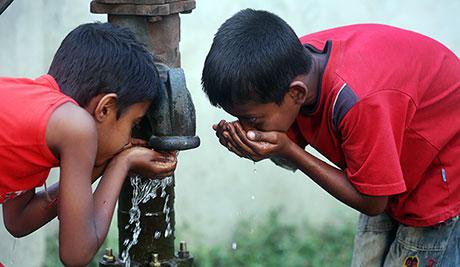Safe Distance Between Water Wells and Pit Latrines Could Reduce Waterborne Diseases

Shumon Ahmed/icddr,b
The contamination of groundwater from shallow tubewells caused by adjacent pit latrines in Bangladesh varies according to the water and soil conditions in different areas, finds an icddr,b study.
Pit latrines are commonly used toilets in rural and sub-urban Bangladesh and these often contaminate groundwater sources when the safe distance between a water point such as shallow tubewells and pit latrine is not adequately maintained.
“There is no such general guideline to determine the mutual distance, but this is very important in order to reduce microbial contamination that causes water-borne diseases,” says Dr Md. Sirajul Islam, Emeritus Scientist at icddr,b and the principal investigator of the study, published in the Journal of Health, Population and Nutrition.
Determining the mutual distance, however, is not an easy task because it depends on a range of issues including the nature of soil and groundwater and their complex relationships at a particular place – known as the hydrogeological condition.
Data from this study on a network of 20 monitoring wells in three sites across Bangladesh has shown that the safe distance could vary and this might depend on a range of issues including the hydrogeological conditions of a particular area.
Other environmental factors such as monsoon could make the situation even more complex. During monsoon, the contamination was found to be worsened by higher absorption of rainwater, mentions the study.
“We need to conduct further studies to understand about safe distance of tubewells from pit latrine in different physiographic divisions of Bangladesh with different hydrogeological conditions,” adds Dr Islam.
Dr John D. Clemens, icddr,b’s Executive Director and senior author of the study, says that excreta-related diseases in Bangladesh have been a major concern and guiding factor in national plans for public health in Bangladesh.
Infectious diseases like cholera, typhoid, dysentery and other diarrhoeal diseases are common in Bangladesh, killing more than 20,000 children annually.
“Conducting further studies could help formulate a general guideline for the safe distance. This would be an important step to address this public health concern related to sanitation in Bangladesh,” says Dr Clemens.
This news story was first published by icddr,b.
